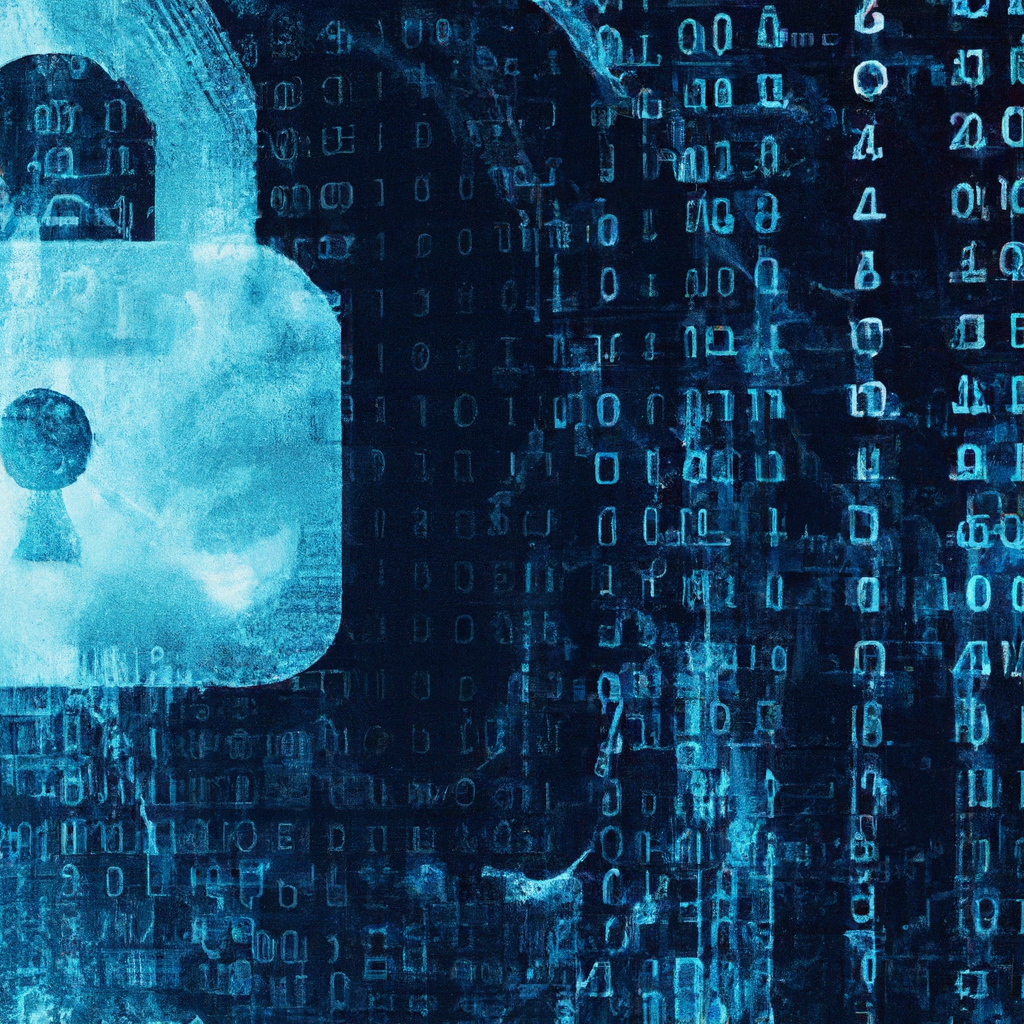In today’s digital age, cyber threats are constantly evolving and becoming more sophisticated, posing a significant challenge to businesses and individuals alike. That’s where Artificial Intelligence (AI) steps in, offering a powerful ally in the fight against cybercrime. By analyzing vast amounts of data, detecting patterns, and learning from past incidents, AI has the ability to strengthen cybersecurity measures and preemptively identify potential risks. With its speed, accuracy, and adaptability, AI plays a crucial role in enhancing cybersecurity and safeguarding our digital lives.
Understanding AI and Cybersecurity
Artificial Intelligence (AI) refers to the development of computer systems capable of performing tasks that typically require human intelligence. It involves the use of algorithms and data to enable machines to learn, reason, and make decisions. On the other hand, Cybersecurity focuses on protecting computer systems, networks, and data from unauthorized access, theft, or damage. It encompasses various measures and technologies designed to prevent and detect cyber threats. The intersection of AI and Cybersecurity presents new opportunities to enhance the effectiveness and efficiency of cybersecurity measures.
AI in Cyber Threat Detection
Real-time Threat Intelligence
AI has revolutionized the field of cyber threat detection by providing real-time threat intelligence. With the ability to analyze vast amounts of data at incredible speeds, AI-powered systems can identify and respond to emerging cyber threats in real-time. This real-time threat intelligence enables organizations to quickly detect and mitigate potential cyber attacks, minimizing the damage caused.
Predictive Threat Analytics
Another valuable application of AI in cybersecurity is the use of predictive threat analytics. By analyzing historical data, AI algorithms can identify patterns and trends that indicate potential future cyber threats. This proactive approach allows organizations to anticipate and prepare for upcoming attacks, strengthening their cybersecurity defenses.
Machine Learning in Anomaly Detection
Machine Learning, a subset of AI, plays a crucial role in anomaly detection. By learning from historical data and understanding normal system behavior, AI-powered systems can identify and flag any deviations that may indicate a cyber attack. This automated anomaly detection greatly improves the speed and accuracy of threat identification, enabling organizations to respond promptly to potential security breaches.

AI in Data Protection
Encryption and Decryption Process of AI
Data protection is a critical component of cybersecurity, and AI has contributed significantly to the encryption and decryption process. AI algorithms can automatically encrypt sensitive data by generating complex encryption keys and secure protocols. Similarly, AI-powered decryption systems can efficiently decrypt encrypted data, ensuring authorized access. This advanced encryption and decryption process strengthen data protection measures, safeguarding sensitive information from unauthorized access.
AI in Biometric Authentication
Biometric authentication, such as fingerprint or facial recognition, has gained popularity in recent years due to its high level of security. AI plays a vital role in biometric authentication by performing complex algorithms to analyze and verify biometric data. AI-powered systems can accurately authenticate users based on their unique biometric characteristics, adding an extra layer of security to data access.
AI in Digital Signature
Digital signatures are widely used to verify the authenticity and integrity of digital documents. AI has greatly enhanced the efficiency and security of digital signatures by automating the verification process. AI algorithms can analyze various parameters and patterns within the digital signature, ensuring its validity and integrity. This automated verification process saves time and effort while maintaining a high level of security.
AI in Incident Response
Threat Neutralization with AI
In the event of a cyber attack, swift and effective incident response is crucial. AI contributes to incident response by enabling threat neutralization. Advanced AI algorithms can automatically identify and analyze the characteristics of a cyber threat, enabling security teams to develop countermeasures and neutralize the threat promptly. This automated threat neutralization enhances incident response capabilities and minimizes the impact of cyber attacks.
Automating Incident Response
Traditional incident response processes can be time-consuming and resource-intensive. AI automates many aspects of incident response, reducing human intervention and accelerating response times. AI-powered systems can automatically detect and categorize security incidents, prioritize them based on severity, and initiate appropriate response actions. This automation enables organizations to respond to and mitigate cyber attacks more efficiently, minimizing potential damage.
Enhanced Forensic Analysis with AI
Forensic analysis plays a crucial role in investigating cyber attacks and identifying attacker activity. AI enhances forensic analysis by automating the analysis process and uncovering patterns and correlations within large sets of forensic data. AI-powered systems can quickly and accurately identify suspicious activities, trace attacker footprints, and provide valuable insights for further investigation. This advanced forensic analysis significantly improves the effectiveness of incident response and aids in the identification and attribution of cybercriminals.

AI in Security Policy Enforcement
Automated Compliance Checks
Compliance with security policies and regulations is essential for maintaining a secure IT environment. AI simplifies the enforcement of security policies by automating compliance checks. AI-powered systems can continuously monitor and analyze system configurations, network traffic, and user behavior to ensure compliance with security policies. Automated compliance checks help organizations identify and address security vulnerabilities promptly, reducing the risk of non-compliance and potential security breaches.
AI in Risk Assessment
Risk assessment is a fundamental component of cybersecurity, helping organizations identify potential vulnerabilities and prioritize security measures. AI enhances risk assessment by analyzing vast amounts of data and identifying potential risks and vulnerabilities. By considering historical data, emerging trends, and system configurations, AI algorithms can accurately assess the likelihood and impact of potential security incidents. This proactive risk assessment enables organizations to allocate resources effectively and implement appropriate security controls.
Use of AI in Policy-making
AI is increasingly being used in the development and refinement of security policies. AI algorithms can analyze vast amounts of data and identify patterns, trends, and emerging threats. This valuable insight into the cybersecurity landscape can help policymakers develop robust and effective security policies. Additionally, AI can assist in policy enforcement, automatically identifying policy violations and initiating appropriate actions. By leveraging AI in policy-making, organizations can enhance the overall security of their IT environments.
Use of AI in Phishing Detection
Email and Web Filtering Through AI
Phishing attacks continue to pose significant threats to organizations and individuals. AI contributes to phishing detection by providing advanced email and web filtering capabilities. AI-powered systems can analyze email and web content, identify phishing attempts, and block malicious emails or websites. This proactive approach helps prevent users from falling victim to phishing attacks and protects sensitive information from being compromised.
Phishing Attempts Detection
AI algorithms can detect and flag potential phishing attempts by analyzing various parameters such as email sender, subject line, and content. By comparing these parameters with known phishing patterns and previous phishing incidents, AI-powered systems can accurately identify suspicious emails. This early detection allows organizations to take prompt action, preventing potential security breaches and financial losses.
AI in Spam Detection
Spam emails not only clutter inboxes but also pose potential security risks. AI plays a crucial role in spam detection by analyzing email content, sender reputation, and user behavior. AI algorithms can differentiate between legitimate emails and spam, effectively filtering out unwanted messages. This automated spam detection improves the efficiency of email communication while reducing the risk of falling victim to phishing attacks or other malicious activities.

AI in Network Security
AI in Security Testing
Security testing is essential to identify weaknesses and vulnerabilities in network systems. AI enhances security testing processes by automating vulnerability scanning and penetration testing. AI-powered systems can analyze network configurations, detect potential vulnerabilities, and simulate cyber attacks to assess system resilience. This automated security testing enables organizations to proactively identify and address security weaknesses, reducing the risk of exploitation.
AI in Network Hardening
Network hardening aims to secure network systems by implementing security controls and best practices. AI contributes to network hardening by analyzing network traffic patterns and system configurations. By identifying unusual or suspicious network behavior, AI-powered systems can suggest security enhancements to strengthen network defenses. This proactive approach to network hardening improves overall network security and reduces the likelihood of successful cyber attacks.
Predictions and Trend Analysis with AI
AI algorithms have the capability to analyze vast amounts of data and identify patterns and trends within network systems. By considering historical data, network traffic, and emerging threats, AI-powered systems can make predictions and provide insights into potential security risks. This trend analysis helps organizations anticipate and prepare for upcoming security challenges, enabling proactive cybersecurity measures.
AI in User Behavior Analytics
AI in Fraud Detection
Organizations face significant challenges in detecting fraudulent activities and preventing financial losses. AI contributes to fraud detection by analyzing user behavior, transaction patterns, and historical data. By identifying anomalies and deviations from normal user behavior, AI-powered systems can accurately flag suspicious activities and detect potential fraud attempts. This proactive approach enhances fraud prevention measures and minimizes financial risks.
Analyzing User Behavior with Machine Learning
Machine Learning algorithms enable AI systems to analyze user behavior patterns. By considering various factors such as login times, access frequency, and file access patterns, AI-powered systems can establish user behavior baselines. Any deviations from these baselines can be promptly identified as potential insider threats or unauthorized activities. Analyzing user behavior with AI enhances overall security and facilitates early detection of suspicious activities.
Preventing Insider Threats with AI
Insider threats can pose significant risks to organizations, as authorized users can misuse their privileges or compromise sensitive information. AI contributes to insider threat prevention by monitoring user behavior and identifying potential anomalies. By analyzing user activities, data accesses, and system interactions, AI-powered systems can detect and flag suspicious behavior or unauthorized access attempts. This proactive approach helps prevent insider threats and safeguard sensitive information.

Challenges in Implementing AI in Cybersecurity
Lack of Quality Data for Training AI
One significant challenge in implementing AI in cybersecurity is the availability of quality data for training AI algorithms. AI systems heavily rely on historical data and patterns to accurately detect and respond to cyber threats. However, collecting and labeling high-quality data specifically for AI training purposes can be time-consuming and resource-intensive. Overcoming this challenge requires organizations to invest in data collection and preparation processes to ensure the effectiveness of AI-powered cybersecurity systems.
False Positives in AI Analysis
AI analysis can sometimes generate false positives, flagging harmless activities as potential threats. False positives can lead to unnecessary disruptions and wasted resources, undermining the trust in AI-powered cybersecurity systems. Addressing this challenge requires ongoing fine-tuning and optimization of AI algorithms, balancing the need for accurate threat detection while reducing false positives. Continuously training AI systems with new data and feedback helps improve their accuracy and reduce false positives.
Lack of Skilled Professionals
Another challenge in implementing AI in cybersecurity is the shortage of skilled professionals who possess a deep understanding of both AI technologies and cybersecurity principles. AI requires specialized knowledge and expertise to develop, deploy, and maintain AI-powered cybersecurity systems effectively. Organizations must invest in training and attracting skilled professionals to bridge the gap between AI and cybersecurity, ensuring the successful integration of AI technologies within their cybersecurity strategies.
Future Trends of AI in Cybersecurity
AI in Quantum Computing
As quantum computing continues to advance, AI is expected to play a crucial role in enhancing cybersecurity in the quantum era. AI algorithms can help secure quantum systems, detect potential vulnerabilities, and optimize quantum encryption methods. The synergy between AI and quantum computing holds great promise in overcoming future cybersecurity challenges and protecting sensitive information in the era of quantum technology.
AI in Blockchain for Cybersecurity
Blockchain technology offers new opportunities for enhancing cybersecurity, and AI can further augment its potential. AI algorithms can analyze blockchain transactions, identify potential anomalies, and detect fraudulent activities within blockchain networks. Additionally, AI can help improve the efficiency and reliability of blockchain consensus algorithms, enhancing the overall security and trustworthiness of blockchain-based systems.
Increasing use of AI in IoT Security
The Internet of Things (IoT) brings new challenges in terms of security, as billions of interconnected devices increase the attack surface for cyber threats. AI is expected to play an increasingly significant role in enhancing IoT security. AI-powered systems can analyze massive amounts of IoT data, detect potential vulnerabilities, and identify anomalous behavior within IoT networks. This advanced threat detection and prevention capability helps mitigate the security risks associated with IoT devices and networks.
In conclusion, the intersection of AI and cybersecurity presents immense potential for enhancing the effectiveness and efficiency of cybersecurity measures. AI contributes to cyber threat detection, data protection, incident response, security policy enforcement, phishing detection, network security, user behavior analytics, and more. However, challenges such as data availability, false positives, and the shortage of skilled professionals must be overcome to fully leverage the benefits of AI in cybersecurity. As technologies continue to evolve, future trends involving AI in quantum computing, blockchain for cybersecurity, and IoT security are expected to shape the cybersecurity landscape. Embracing the power of AI will help organizations stay ahead of emerging threats and secure their digital assets in an increasingly interconnected world.











